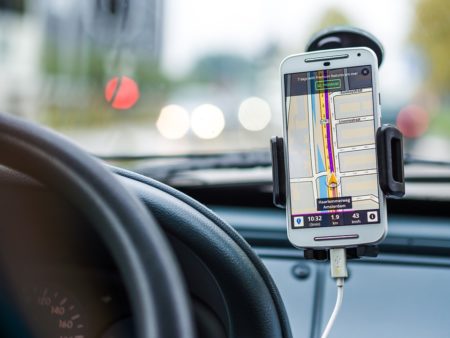7 Amazing Everyday Inventions
by Scott Dutfield · 13/02/2019

We take them for granted, but modern life depends on these incredible discoveries and inventions
1. Electricity: By discovering how to manipulate the flow of electrons, we triggered a technological revolution
Almost everything we do in our lives relies on electricity. Without it, our homes would be colder in winter, our food would go stale quicker, there would be no factories to build planes, trains and automobiles, no TV, circuit boards, AEDs or other high-tech medical equipment, and we wouldn’t be reachable 24-7 on our mobile phones. We, therefore, have a lot to thank electrons for. As they zip across a conductor from a negatively charged object to a positively charged one, these subatomic particles create the electric currents that power the modern world’s technological progress.

2. Water treatment: Giving water a thorough clean before it enters our homes helps us live healthier lives
Water that is pumped through mains pipes to our taps has generally been drawn either from reservoirs or underground aquifers. Before it becomes drinkable, however, it is subjected to processes that include filtration, flocculation, sedimentation and possibly fluoridation to remove dirt, debris, invertebrates, fish, potentially harmful bacteria and bad smells. Bottled water sold in shops also needs to conform to regulated health and safety standards. Accordingly, it may be filtered or chemically treated and even be derived from municipal tap water supplies.

3. Global positioning systems: Getting lost is almost impossible now that everyday devices are always receiving signals from space
Almost everything we do in our lives relies on electricity. Without it, our homes would be colder in winter, our food would go stale quicker, there would be no factories to build planes, trains and automobiles, no TV, circuit boards, AEDs or other high-tech medical equipment, and we wouldn’t be reachable 24-7 on our mobile phones. We, therefore, have a lot to thank electrons for. As they zip across a conductor from a negatively charged object to a positively charged one, these subatomic particles create the electric currents that power the modern world’s technological progress.

4. Radio transmission: Our uses for nature’s hidden transmissions now go far beyond what we can hear
Radio is a natural phenomenon that we exploit using transmitters and receivers. The former intensifies the electromagnetic radiation produced by moving particles and beams it over the air as waves. Receivers intercept and interpret these waves as sounds, images or other data based on factors such as frequency. Shortwave signals travel long distances because they are reflected back to Earth by the upper layers of the ionosphere. Signals in longer wavebands travel within the troposphere closer to the ground and are deflected by spatial differences in factors such as temperature, pressure and humidity.


5. The internet: The interconnectedness of modern computers is so essential, it’s hard to imagine life without it
A network of geographically distant computers was originally proposed in the 1960s by MIT computer researcher JCR Licklider. The earliest form, ARPANET, was limited to just a few nodes in the US, but the development of packet switching and TCP/IP protocols (internet communication ‘languages’) in the 1970s unlocked the network’s potential for expansion around the world. E-mail was being used by the 1980s, but it wasn’t until Tim Berners-Lee introduced the World Wide Web in the early 1990s that the internet began to spread beyond research and government institutions. Since then, improvements in security, data transmission speeds, server technology and mobile access have allowed individuals and organisations to store and access ever-increasing amounts of data and send big files at faster speeds from anywhere. Meanwhile, internet commerce and media streaming have revolutionised shopping, publishing, music and visual media, while activities such as banking, online voting, social networking and, unfortunately, cybercrime have become commonplace.

6. Artificial light: Our mastery of fire and electricity has led to illuminating innovations that enhance and save lives
Although electricity powers our TVs, monitors and mobile phones, these devices are only useful because pixels in their screens produce light. The electrically charged organic compounds hidden under cutting-edge displays are a long way from the open flames we once used on candles and gas lamps. Yet heat and other chemical reactions are still used in incandescent and fluorescent bulbs to light up homes and businesses and make streets safe at night. Other important things we can do by controlling photons include taking photos and helping surgeons to see deep into our bodies where clots and cancer could be hiding.

7. Lasers: Far from being the stuff of science fiction, this light-based technology is all around us
Light Amplification by Stimulated Emission of Radiation (LASER) describes a process whereby electrons are excited inside atoms through the application of an energy source such as an electric current or another laser. Once excited, the electrons jump to a higher-energy orbit around the atom’s nucleus. When they subsequently drop back to their normal ground state, they emit light as a confined stream of photons that are all at the same wavelength.

This article was originally published in How It Works issue 100, written by Mike Simpson
For more science and technology articles, pick up the latest copy of How It Works from all good retailers or from our website now. If you have a tablet or smartphone, you can also download the digital version onto your iOS or Android device. To make sure you never miss an issue of How It Works magazine, subscribe today!




